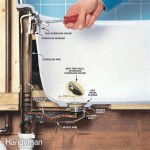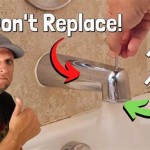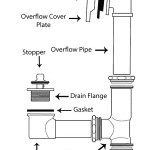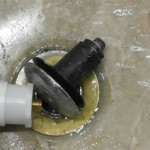Labor Cost to Replace Bathtub and Surround: A Comprehensive Guide
Replacing a bathtub and its surrounding can significantly enhance the aesthetic appeal and functionality of a bathroom. However, accurately estimating the labor cost involved is crucial for effective budgeting and project management. This article provides a detailed breakdown of the various factors influencing labor costs associated with bathtub and surround replacement, offering a comprehensive guide for homeowners.
The overall labor cost can fluctuate substantially depending on several variables, including the complexity of the installation, the existing bathroom layout, the type of materials selected, and the prevailing labor rates in the locality. It's essential to consider these factors when planning a bathtub and surround replacement project.
Key Point 1: Factors Influencing Labor Costs
Several elements contribute to the overall labor expenses associated with replacing a bathtub and its surround. Understanding these factors allows homeowners to make informed decisions and anticipate potential costs.
Existing Bathroom Condition and Demolition: A significant portion of the labor cost is attributed to the demolition and removal of the existing bathtub and surround. Older bathrooms may present challenges due to outdated plumbing, corroded fixtures, or the presence of asbestos (in older homes), which requires specialized handling and adds to the labor cost. The ease of access to the plumbing and the structural integrity of the surrounding walls also influence the time and effort required for demolition.
Type of Bathtub and Surround: The type of bathtub and surround chosen significantly impacts the labor cost. Standard alcove bathtubs are generally less expensive to install than more complex options such as freestanding tubs or custom-built showers. The material of the surround, such as acrylic, tile, or fiberglass, also affects the installation time and expertise needed. Tile surrounds, for example, require precise cutting, grouting, and sealing, which demands skilled labor and increases the overall cost.
Plumbing and Electrical Work: Bathtub replacement often necessitates adjustments to existing plumbing lines or the installation of new fixtures, such as faucets, showerheads, and drains. If the plumbing needs to be relocated or updated to meet current codes, it will incur additional labor costs. Similarly, electrical work might be required if new lighting or ventilation fans are being installed concurrently. Certified plumbers and electricians are typically hired for these tasks, further contributing to the labor expenses.
Bathroom Layout and Accessibility: The layout of the bathroom and its accessibility play a crucial role in determining labor costs. A small, cramped bathroom can make maneuvering heavy equipment and materials challenging, increasing the time required for installation. Bathrooms located on upper floors or in areas with limited access may also necessitate additional labor to transport materials, thereby raising the overall cost. Modifications to the bathroom layout, such as moving walls or reconfiguring the plumbing, will significantly increase labor expenses.
Permits and Inspections: Depending on local regulations, a permit may be required for bathtub and surround replacement, especially if plumbing or electrical work is involved. Obtaining the necessary permits and scheduling inspections can add to the overall project timeline and cost. These fees usually cover the cost of the inspection to ensure the work complies with local building codes.
Key Point 2: Breakdown of Labor Tasks and Associated Costs
Understanding the individual tasks involved in bathtub and surround replacement can provide a clearer picture of how the labor costs are allocated.
Demolition and Removal: This initial step involves disconnecting the existing plumbing, removing the old bathtub and surround, and preparing the area for the new installation. The cost of demolition and removal can range from $150 to $500, depending on the complexity of the job and the materials being removed. Factors such as the age of the existing fixture and the presence of difficult-to-remove adhesives can influence the time and effort required.
Plumbing and Electrical Adjustments: Adjusting or relocating plumbing lines can cost between $200 and $800, depending on the extent of the work. This may involve rerouting pipes, installing new shut-off valves, or replacing damaged sections of plumbing. Electrical work, such as installing new outlets or wiring for lighting, can add an additional $100 to $500 to the labor cost. It is crucial to hire licensed professionals for both plumbing and electrical work to ensure code compliance and safety.
Subfloor and Wall Preparation: Before installing the new bathtub and surround, the subfloor and surrounding walls need to be inspected and repaired if necessary. This may involve patching holes, leveling the floor, or reinforcing the walls to ensure proper support. The cost of subfloor and wall preparation can range from $100 to $400, depending on the extent of the repairs needed. Neglecting this step can lead to future problems such as leaks, instability, and premature failure of the new installation.
Bathtub Installation: The cost of installing the new bathtub typically ranges from $300 to $1000, depending on the type of bathtub and the complexity of the installation. Alcove bathtubs are generally easier to install than freestanding tubs, which require more precise leveling and plumbing connections. Considerations for accessibility also influence the price. Walk-in tubs, designed for individuals with mobility issues, often have higher installation costs due to their specialized features and plumbing requirements.
Surround Installation: Installing the new surround can cost between $400 and $1500, depending on the material and design. Tile surrounds are the most labor-intensive, requiring precise cutting, setting, grouting, and sealing. Acrylic or fiberglass surrounds are typically easier to install, but still require careful alignment and sealing to prevent water damage. The complexity of the design, such as intricate patterns or custom borders, can also increase the labor cost.
Finishing Touches: Finishing touches include caulking seams, installing trim, and ensuring the water tightness of the installation. These final steps are crucial for preventing leaks and ensuring the longevity of the new bathtub and surround. The cost of finishing touches is usually included in the overall installation cost.
Key Point 3: Obtaining Accurate Estimates and Managing Costs
Securing accurate estimates and effectively managing costs are crucial for a successful bathtub and surround replacement project.
Obtain Multiple Quotes: It is advisable to obtain quotes from at least three different contractors to compare pricing and services. Ensure that each quote provides a detailed breakdown of the labor costs, materials, and any additional fees. Be wary of estimates that are significantly lower than others, as this may indicate substandard work or hidden costs.
Verify Contractor Credentials and Insurance: Before hiring a contractor, verify that they are licensed, insured, and have a good reputation. Check online reviews and ask for references from previous clients. A reputable contractor will be able to provide proof of insurance and licensing, and should be willing to answer any questions you may have.
Define Project Scope Clearly: A well-defined project scope is essential for obtaining accurate estimates and avoiding misunderstandings. Clearly communicate your expectations to the contractor, including the type of bathtub and surround you want, the desired finish, and any specific requirements or concerns. A written contract outlining the project scope, timeline, and payment terms can help prevent disputes and ensure that both parties are on the same page.
Prepare for Unexpected Issues: During demolition, unexpected issues such as hidden water damage or outdated plumbing may arise. It is wise to set aside a contingency fund to cover these unexpected costs. Discuss potential issues with the contractor beforehand and establish a process for addressing them promptly and efficiently.
Consider DIY Options Carefully: While some homeowners may be tempted to save money by attempting a DIY installation, it is important to consider the risks and potential consequences. Bathtub and surround replacement requires specialized skills and knowledge, and improper installation can lead to water damage, structural problems, and code violations. If you are not experienced in plumbing, electrical work, and tiling, it is generally best to hire a professional contractor.
By carefully considering these factors and proactively managing the project, homeowners can effectively estimate and control labor costs associated with bathtub and surround replacement, ensuring a successful and satisfactory outcome.

Tub Replacement Cost In 2024 Forbes Home

Average Bathtub To Shower Conversion Cost In 2024 Forbes Home

Shower Installation Costs Are As Varied Your Design Options Block Guides

How Much Does A Bath And Shower Liner Cost Forbes Home

How Much Does It Cost To Replace A Tub With Shower

How Much Does Bathtub Replacement Cost In 2024 Angi

How Much Does Bathtub Replacement Cost In 2024 Angi

2024 Bathtub Replacement Cost New Tub Installation

2024 Bathtub Replacement Cost New Tub Installation

Bathtub Replacement Does This Estimate Sound Right Bogleheads Org
Related Posts








